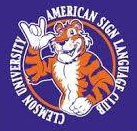Adaptive Tool for the Flipped Classroom
When I was completing my undergraduate studies at Clemson University, I was able to take American Sign Language as my foreign language. As a result, I became very active in the ASL Club where I was able to participate in numerous events within the Clemson / Anderson Deaf Community, and I was able to learn so much about the community and their culture.
After watching and reading this week’s material, it really had me reflecting back on my experiences as an undergrad and how the deaf community can and will be impacted by the flipped classroom movement. I started about, what tool could I share with the teachers in my school which could be used as an adaptive technology to meet the needs of potential students who are members of the deaf community. Personally, as a teacher, I have never even considered this as an obstacle unless I had a deaf student in my classroom room, presently, but there are is always a chance of class roster changes throughout the year. Also, if I had an exceptional lesson which I had flipped, I would want the ability to use it from year to year, so accommodations should be considered in the beginning and not just because you have a new student come in.
With all of this in mind, Screencast-o-matic was the resource that first came to mind. Screencast-o-matic can be found at https://screencast-o-matic.com/. Screencast-o-matic has free and paid versions, both of which you can utilize to add closed captioning to anything which you record. I know that most of the time, teachers are going to want a tool to use which is free, but personally, I think the Solo Deluxe plan is well worth the $1.50/per month that you spend. The see a full comparison of the free versus paid versions please visit https://screencast-o-matic.com/plans.
With Solo Deluxe, you can edit video, script your video, as well as utilize other resources built into their platform. The biggest perk with the paid version is that you can easily edit the closed captions if the auto recognition does not get the wording correct. This is especially useful if you are using the video as a flipped lesson. All videos can also be uploaded to a teacher’s Google Drive, which would make sharing lessons through a Google Classroom much easier without the worry of a district monitoring program blocking a YouTube video which you created.



No comments:
Post a Comment